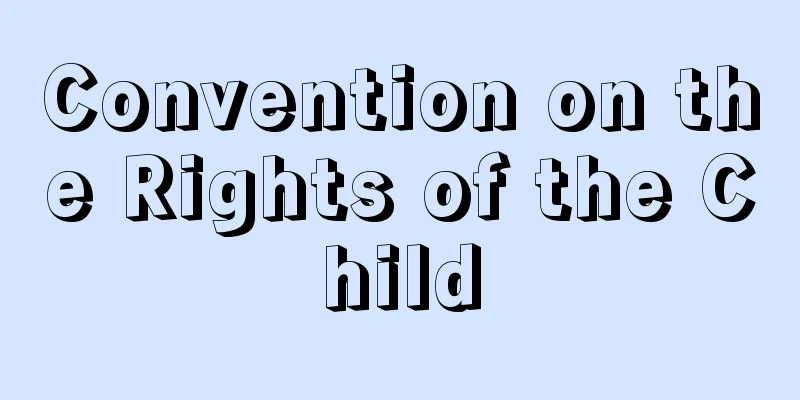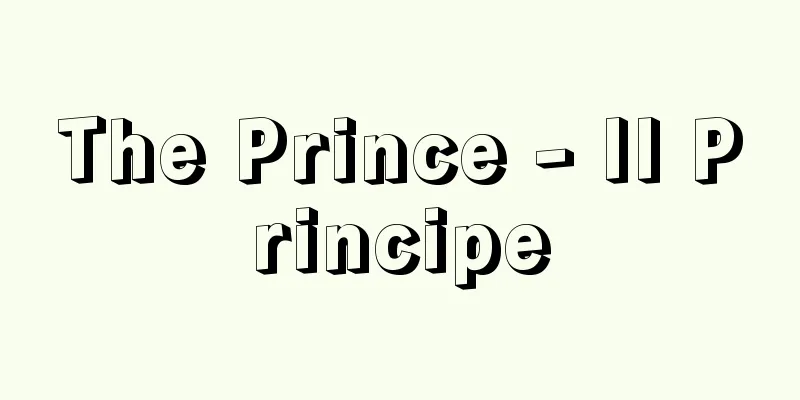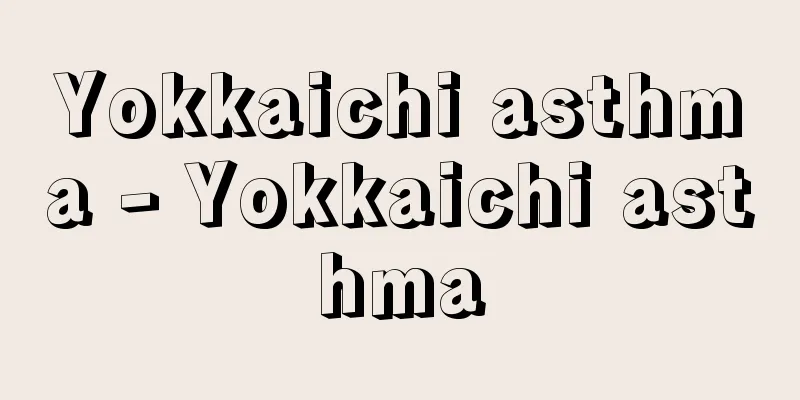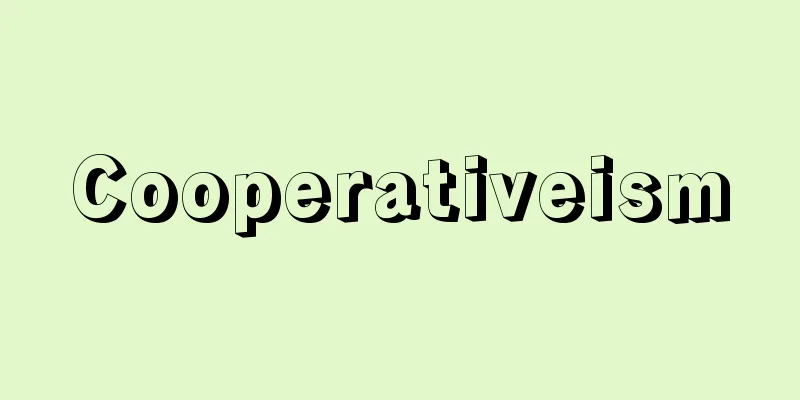Convention on the Rights of the Child

|
A treaty that recognizes children (all people under the age of 18) as subjects of human rights and commits countries to ensuring their protection on a global scale. The process leading up to ratificationThis treaty originated from the Geneva Declaration on the Rights of the Child (1924), an agreement made by the League of Nations to give children the "best thing (peace)" from now on, as a reflection of the many children who died in World War I. After World War II, the United Nations went a step further and aimed to simultaneously realize "peace and human rights," enacting the Universal Declaration of Human Rights (1948), which aimed to give priority to the human rights of "women and children," who had traditionally not participated in national decision-making on war and had always been the main victims of war. To achieve this, the United Nations enacted the Declaration on the Rights of the Child (UN Declaration of the Rights of the Child) (1959), proposing 10 specific items to guarantee children's human rights (such as the right to have a name and nationality). Based on this, in 1978, Poland (represented by former Supreme Court Justice Adam Lopatka) submitted a draft of this treaty to the UN Human Rights Commission, with the intention of carrying on the spirit of "children's human dignity" advocated by educator Janusz Korczak, who was killed while trying to protect children's lives during the Holocaust by Nazi Germany during World War II. Deliberations on this treaty began in 1979, the International Year of the Child (the same year the Convention on the Elimination of All Forms of Discrimination against Women was enacted), and it aims to guarantee children's human rights on a global scale. It was unanimously passed and enacted at the 44th UN General Assembly on November 20, 1989, and came into force on September 2, 1990. Japan ratified it on May 22, 1994. [Kenichi Nagai] Contents of the TreatyThe government translates the Convention on the Rights of the Child as the Convention on the Rights of the Child, but both terms are allowed for public relations purposes. The first feature of this treaty is that it recognizes children as subjects of human rights, just like adults, based on the principle of guaranteeing equality for all human beings without discrimination. Therefore, it seeks to guarantee all human rights guaranteed to adults by the International Covenant on Human Rights (1966), such as "freedom of thought, conscience, assembly and association" (Articles 14 and 15), except for the right to vote, to children. The second feature is that it recognizes the "right to express opinions" (Article 12) to guarantee children's right to self-determination for independence. This entails responsibilities on the part of children. The third feature is that it is based on humanism, so to speak, by guaranteeing "ensuring life, survival and development" (Article 6) and "the right to acquire a name and nationality" (Article 7) to children, especially those who are in the process of growth and development, and by obligating parents to bear the primary responsibility for guaranteeing these rights, and the state providing support for the lives of their parents (Article 18). [Kenichi Nagai] Current status and challenges of implementing the Convention in JapanThis treaty establishes a permanent Committee on the Rights of the Child, composed of human rights experts selected by the United Nations, which requires states parties to report on the status of their implementation of the protection of children's human rights two years after ratification and every five years thereafter, and if any problems are found, the committee will recommend improvements, with the aim of ensuring that all states work in unison to realize the principles of the treaty on a global scale (Articles 43-45). The United Nations Committee on the Rights of the Child (54th session) met in Geneva on May 27-28, 2010, and reviewed the third report of the Japanese government. As a result, the Committee found that Japan's enactment of the "Act on the Promotion of Child and Youth Development Support" (July 2009) was a step forward, but expressed doubts as to whether these documents were based on children's rights. It asked the Japanese government whether it intended to enact a "Basic Law on the Rights of the Child" and urged the government to adopt a "Comprehensive Law on the Rights of the Child." There are three places in the recommendation where the committee states "strongly recommends." Although the UN's recommendation is not legally binding, the UN's strong will to have its recommendations followed as much as possible is still apparent. One of these is the above-mentioned (1) request for the enactment of a basic law on the rights of the child, while the other two are (2) preferential allocation of national and local child budgets, and (3) legislation to completely prohibit corporal punishment, including at home and in institutions. In the midst of the issue of "child poverty," there is a demand for preferential allocation of child budgets. Also, in response to the worsening and increasing incidence of child abuse, it is noteworthy that a ban on "corporal punishment by parents," which is a breeding ground for child abuse, has been given priority. Despite these strong requests from the United Nations to the Japanese government, the Japanese government has not revised the current Article 731 of the Civil Code, which sets the minimum age for marriage at 18 for men and 16 for women, a provision that imposes gender discrimination, and has left in place the discriminatory provision in Article 900, Paragraph 4, which limits the inheritance share of illegitimate children to half that of legitimate children, to just a few examples. Furthermore, a "Basic Law on the Rights of the Child" that clarifies basic policies for promoting this treaty has not been enacted, and no "Children's Agency" has been established to implement it, but there are noticeable movements, mainly as citizens' movements, by people who strongly desire the implementation of this treaty to enact "Children's Rights Ordinances" in their local municipalities to realize this. Nearly 100 children's ordinances have already been enacted, starting with Hyogo Prefecture's "Kawanishi City Children's Human Rights Ombudsperson Ordinance" (1998) and Kanagawa Prefecture's "Kawasaki City Children's Rights Ordinance" (2000). [Kenichi Nagai] "Nagai Kenichi (ed.), "The Convention on the Rights of the Child Commentary" (1990, Nippon Hyoronsha )" ▽ "The Convention on the Rights of the Child Forum Executive Committee, "Verification of the Convention on the Rights of the Child" (1997, Nippon Hyoronsha)" ▽ "Nagai Kenichi (ed.), "The Convention on the Rights of the Child in Action by Local Governments" (1997, Akashi Shoten) " ▽ "Nagai Kenichi (ed.), "Children's Human Rights and Litigation" (1998, Hosei University Press)" ▽ "Convention on the Rights of the Child Research Institute, "Children's Ordinance Handbook" (2008, Nippon Hyoronsha)" ▽ "Kita Akito, Morita Akemi et al. (eds.), "Article-by-Article Commentary on the Convention on the Rights of the Child" (2009, Nippon Hyoronsha)" ▽ "Convention on the Rights of the Child Research Institute, "Guidebook to the Convention on the Rights of the Child" (2011, Nippon Hyoronsha)" [References] | | | | | | | |Source: Shogakukan Encyclopedia Nipponica About Encyclopedia Nipponica Information | Legend |
|
子ども(18歳未満のすべての人間)を人権の主体として認め、その保障を地球規模で各国において実現することを約束し合った条約。 批准までの経過この条約は、第一次世界大戦で多数の子どもが犠牲になった反省から子どもにとって「戦争は最悪のもの」なので、これからは子どもに「最善のもの(平和)」を与えようと国際連盟で申し合わせた「子どもの権利に関するジュネーブ宣言」(1924)から出発した。第二次世界大戦後、さらに一歩進めて「平和と人権」の同時実現を目ざした国際連合は「世界人権宣言」(1948)を制定し、従来、戦争の国家意思決定には参加しないで、つねにその戦争のおもな犠牲者とされてきた「女性と子ども」の人権の優先的保障を目ざした。そしてその実現のために、子どもの人権を具体的に保障する10項目(名前や国籍をもつ権利など)を提案する「子どもの権利宣言(国連児童権利宣言)」(1959)を制定した。これを土台として1978年には、第二次世界大戦時のナチス・ドイツによるホロコーストのなかで、子どもの生命を守り通そうとして自らも殺害された教育者ヤヌシュ・コルチャックが訴えた「子どもの人間としての尊厳」の精神を継承する意図で、ポーランド(代表=アダム・ロパトカ元最高裁判事)から国連人権委員会に本条約の草案が提出された。本条約は、国際児童年に設定された1979年(同年「女性差別撤廃条約」制定)から審議が開始され、地球規模で子どもの人権を保障するためのものである。1989年11月20日に国連の第44回総会において満場一致で可決、制定され、1990年9月2日に発効した。日本は1994年(平成6)5月22日に批准した。 [永井憲一] 条約の内容「子どもの権利に関する条約」について政府は「児童の権利に関する条約」と訳しているが、広報上は双方の併用が認められている。この条約の特徴の第一は、すべての人間を無差別平等に保障する理念にたって、子どもも大人と同じ人権の主体として認めようとする点である。したがって国際人権規約(1966)によって大人に保障された人権のうち、「思想・良心や集会・結社の自由」(14条、15条)など、選挙権を除くすべてを子どもにも保障しようとしている。第二は、子どもの自立のための自己決定権を保障するための「意見表明権」(12条)を認めている点である。そのためには子どもにも責任が伴う。第三は、とくに成長、発達の途上にある子どもに「生命・生存、発達の確保」(6条)や「名前・国籍の取得権」(7条)などを保障し、その保障の第一次責任を親に義務づけて、国はその親の生活を支援する(18条)など、いわば人間主義に立脚している点である。 [永井憲一] 日本における条約の実施の現状と課題本条約では、国連に選ばれた人権専門家で構成される「子どもの権利委員会(児童の権利に関する委員会)」を常設して、締約国に批准後2年、その後は5年ごとに子どもの人権保障の実施に関する状況報告を義務づけ、問題があればその改善を勧告するなどして、各国が同一歩調をとって地球的規模で本条約の理念を実現することを目ざしている(43条~45条)。 2010年(平成22)5月27~28日に、ジュネーブで国連子どもの権利委員会(第54会期)が開かれ、日本政府の第3回報告が審査された。その結果、同委員会は、日本における「子ども・若者育成支援推進法」(2009年7月)の制定などを一歩前進とみたものの、これらの文書が子どもの権利を基盤としたものであるかどうかについて疑念を示し、日本政府に対して、「子どもの権利基本法」などを制定する意思があるかどうかを問い、「子どもの権利に関する包括的法律」の採択を促した。 同委員会が勧告文のなかで「強く勧告するstrongly recommends」と表記した箇所が3か所ある。国連の勧告権には法的な拘束力はないが、それでもできるだけ勧告に従ってほしいという国連の強い意思が伝わってくる。一つは、上記の(1)子どもの権利基本法の制定への要請であるが、残りの2か所は、(2)国・自治体の子ども予算の優先的な配分、および(3)家庭・施設を含めた全面的な体罰禁止の立法化である。「子どもの貧困」問題がいわれるなかで、子ども予算の優先的な配分が求められている。また、児童虐待の深刻化と増加に対して、その温床となっている「親による体罰」の禁止が優先的な課題になっていることが注目される。 なお、こうした国連からの日本政府への強い要請があるにもかかわらず、日本政府は、一、二の例を掲げれば、現行の民法第731条(婚姻適齢)として男子は18歳、女子は16歳としている男女差別を改めていないし、第900条4項の非嫡出子の相続分を嫡出子の2分の1としている差別規定をそのままにしている。 また、この条約を推進する基本施策を明確にする「子どもの権利基本法」も制定されておらず、それを実施する「子ども庁」も設定されていないが、この条約の実施を強く要望する国民は、おもに市民運動として、身近な地方自治体に「子どもの権利条例」を制定して、これを実現しようとする動きが目だっている。すでに、兵庫県「川西市子どもの人権オンブズパーソン条例」(1998)や神奈川県「川崎市子どもの権利に関する条例」(2000)などを皮切りとして100近い子ども条例が制定されてきている。 [永井憲一] 『永井憲一編『解説子どもの権利条約』(1990・日本評論社)』▽『子どもの権利条約フォーラム実行委員会編『検証・子どもの権利条約』(1997・日本評論社)』▽『永井憲一監修『自治体でとりくむ子どもの権利条約』(1997・明石書店)』▽『永井憲一編『子どもの人権と裁判』(1998・法政大学出版局)』▽『子どもの権利条約総合研究所編『子ども条例ハンドブック』(2008・日本評論社)』▽『喜多明人・森田明美他編『逐条解説 子どもの権利条約』(2009・日本評論社)』▽『子どもの権利条約総合研究所編『子どもの権利条約ガイドブック』(2011・日本評論社)』 [参照項目] | | | | | | | |出典 小学館 日本大百科全書(ニッポニカ)日本大百科全書(ニッポニカ)について 情報 | 凡例 |
<<: Children's Scenes - Children's Scenes
>>: Children's Country - Children's Country
Recommend
ellampsis
…This is the result of a divine revelation, not a...
Universitas medicorum (English spelling)
…Christianity, Islam, and Judaism were allowed to...
New Haven
A port and commercial/industrial city on the Long ...
Sabuktigin (English spelling)
…He held real power under Abd al-Malik I, but was...
croton bug
...The English name cockroach is an English trans...
Kitaru - Kitaru
…The name comes from the Persian word kārvān, mea...
Udatsu
…It is also written as 卯立 or 梲. In the past, it m...
Romances sans paroles (English spelling) Romances ansparoles
…In 1870, he married Mathilde Mautet, who was sun...
Teissier, G.
…Regarding the growth of living organisms, the re...
Juan II
1398‐1479 The second son of Ferdinand I, the first...
Shigetsuna Inagaki
1583-1654 A daimyo in the early Edo period. Born ...
Kim Hong-do (English spelling)
[Born] Yeongjo 21 (1745) / Yeongjo 36 (1760) [Dead...
Concentration Elimination Law - Concentration Elimination Law
〘Noun〙 Abbreviation for "Kado Keizai Ryoku Sh...
DLE - DLE
Discoid lupus erythematosus is an abbreviation for...
La Laurencie, L. (English spelling) LaLaurencieL
…With the help of many collaborators, he publishe...



![Pyrenean mountain dog [breed] (English spelling)](/upload/images/67cca708858f0.webp)





